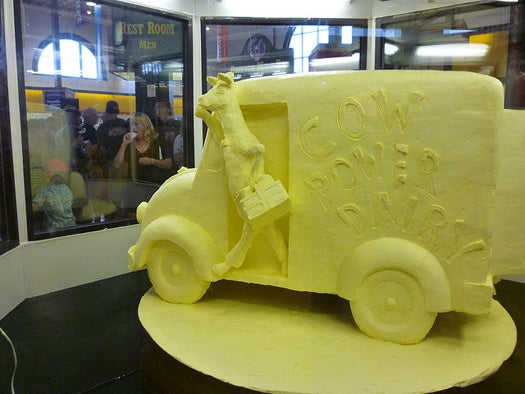New Plan Could Turn Dirty Grease and Dairy Into Biofuel
What do you do with an 800-pound butter sculpture of Benjamin Franklin that’s starting to go bad? Normally, the inedible...

What do you do with an 800-pound butter sculpture of Benjamin Franklin that’s starting to go bad? Normally, the inedible art would get tossed in a Dumpster. The organizers of the Pennsylvania Farm Show had a better idea: Donate it to science.
This summer, researchers from the U.S. Department of Agriculture and alternative-energy firm BlackGold Biofuels described how they turned that hunk of spoiled solid fat into biodiesel. They melted the sculpture, strained off the water, and added methanol. The chemical bonded to the end of the chains of fatty acids in the lard, turning them into 76 gallons of fatty-acid methyl esters, which could then be refined into biodiesel that can be burned in most diesel engines.
There will never be enough butter sculptures to churn out a significant supply of biofuel, of course. But, says USDA scientist Michael Haas, the lead author of the paper, the technique can be applied to other dirty solid grease. Many restaurants have their used frying oil converted into biofuel, but plenty of grease washes down kitchen drains and solidifies in sewers; a typical gallon of wastewater contains up to 5 percent grease. Haas says that his process can convert the gunk into diesel at prices competitive with soybean biofuel, about $2.50 a gallon.
Early next year, Black-Gold will begin operating grease-straining equipment at a water treatment facility in San Francisco and says it will use the dregs it gets to help power the city’s bus fleet. If the technology is successful, the company could bring it to other cities in a year.